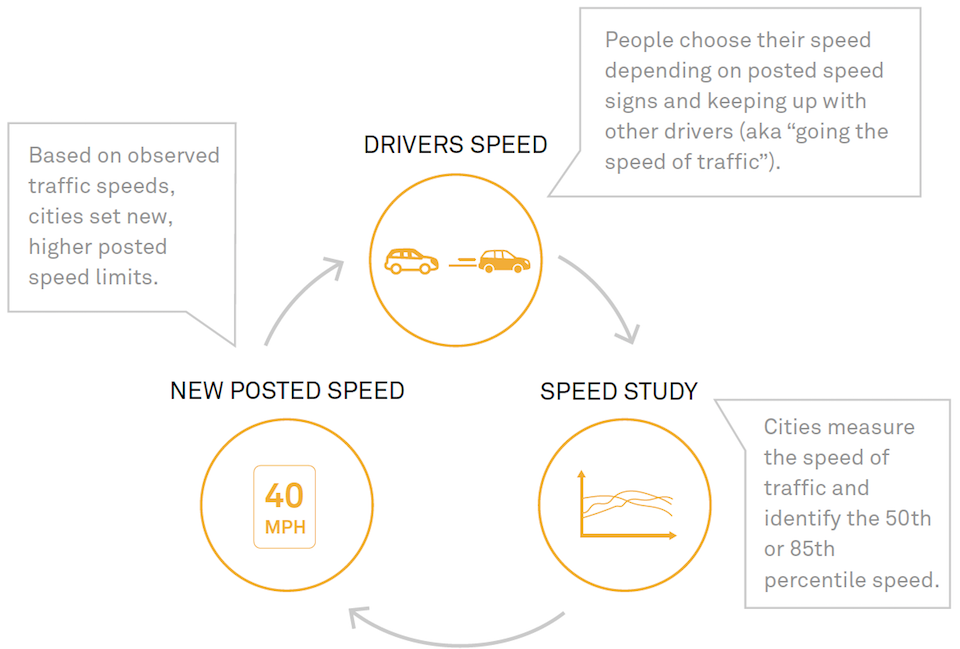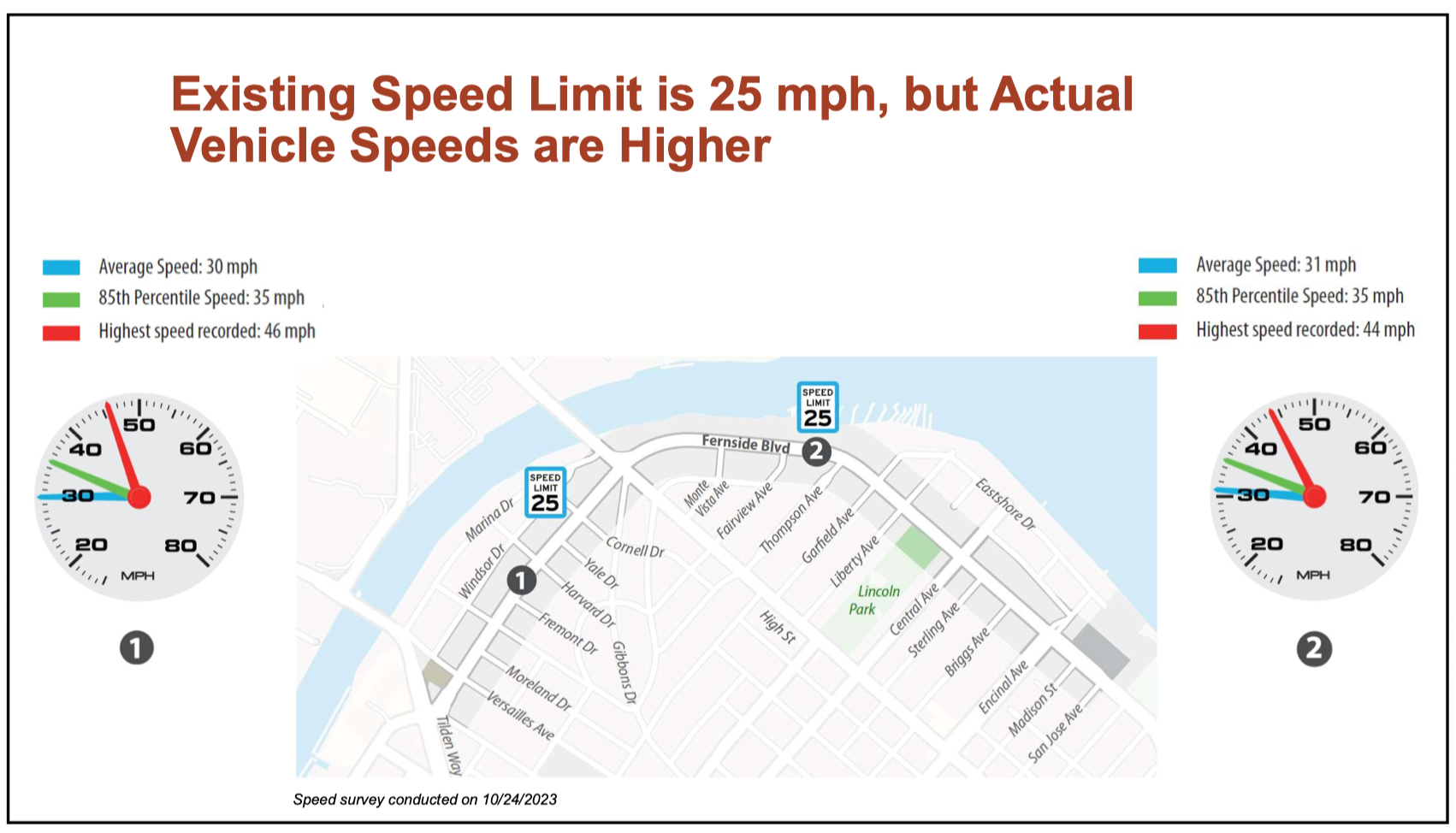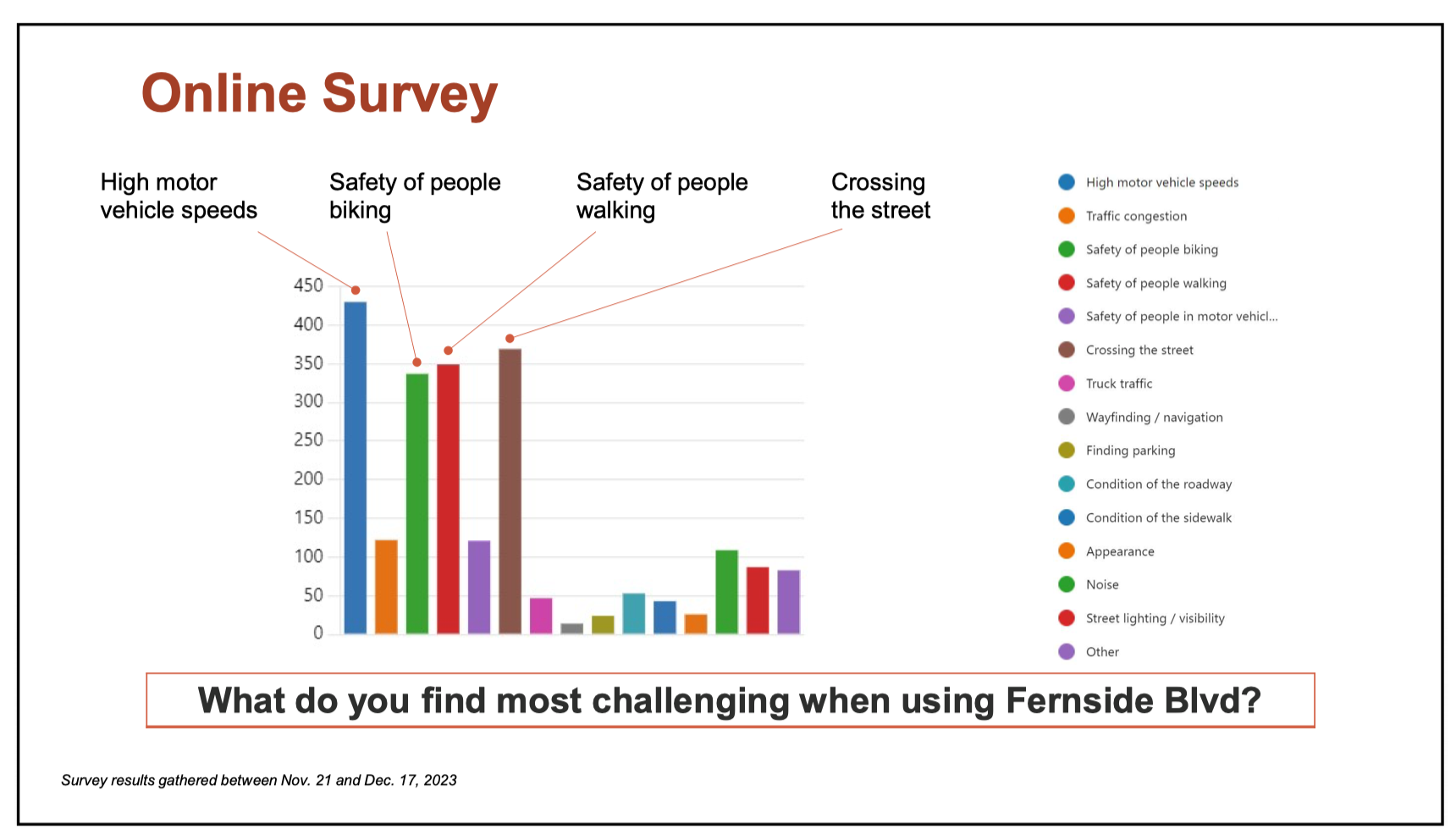This past Wednesday's Alameda city Transportation Commission meeting regarding Fernside Boulevard touched on two percentages that I think are each informative: 85% and 5%:
- The city's engineering consultants went out and measured drivers speeds along Fernside Boulevard. The posted speed limit is 25 MPH. However, 85% of drivers were observed traveling traveling up to 35 MPH.
- City staff and their consultants conducted public-engagement through a number of different channels — an online survey, an in-person workshop, and an online workshop, with hundreds of participants in total — and across all channels found a "consistent rate of 5-10% of respondents do not desire improvements" according to the staff report.
Both the 85% percentage and the 5-10% percentage represent larger, meaningful trends in Alameda — the former in terms of engineering practices and the latter in terms of local politics.
85%
Traffic engineers give a lot of importance to the 85th percentile speed:
Current speed limit setting practice in the US uses a percentile-based method, typically set at the 85th percentile, to determine speeds. Traffic engineers record how fast vehicles are traveling on a road, determine the speed that 85 percent of drivers are traveling at or below, then set the new speed limit by rounding from that speed to the nearest 5 mph increment. Traffic engineers who use the 85th percentile method are instructed to raise the speed limit when more than 15% of drivers are driving faster than posted signs. This method forces engineers to adjust speed limits to match observed driver behavior instead of bringing driver behavior in line with safety goals and the law.
—National Association of City Transportation Officials (NACTO)

So if Alameda's engineers and planners were following this outdated convention, the Fernside project would simply involve changing the existing speed limit signs from 25 MPH to 35 MPH.

Fortunately, the times are changing across the country and in Alameda. Instead of just increasing the posted speed limit, Alameda's team of planners, engineers, and consultants closely reviewed crashes along the corridor and surveyed members of the public.
The surveys show a consistent message: drivers are driving too fast!

Therefore, the Fernside Boulevard Traffic Calming and Bikeways Project will use both a "quick build" phase and a more permanent implementation phase to modify the street to reduce speeding.
(To be frank, I think the "toolkit" of potential means of reducing speed that the planning team offered needs more substantive "tools." Less emphasis on advisory additions like flashing pedestrian crossing beacons, more emphasis on hard additions like center-lane dividers, separated cycletracks, and raised crossings for pedestrians. But it's still early in this project and I trust that the planning team will more thoroughly consider a wide range of "treatments" to address speeding, easier crossings for pedestrians, and safer facilities for cyclists.)
What is worth appreciating at this early stage of the project is that 85% no longer holds such power over traffic engineers — this team of engineers and planners understands that physical changes should be made to this stretch of street so that it's more clear — concretely clear — that the expectation for drivers is that they will travel around 25 MPH — not enjoy the wide road and "accidentally" drift up to 35 MPH.
5% to 10%
I started this blog about Alameda year ago with the following framing:
As I've been learning about how Alameda's city government works — and does not, at times, work — I've found this framing of engaging with change vs. opposing any and all change to be a useful way to understand local elected officials, the handful of "usual suspect" public commenters, the couple dedicated local bloggers who've continued to post past the original heyday of blogging, and also my own inclinations.
I don't mean to frame every local issue as a binary competition. Rather, I'm looking for a more useful way to describe what's going on in Alameda than turning to labels like "progressive" and "moderate" and "conservative." (Note the so-called "scare quotes"!) That spectrum may make some sense for national issues like, say, health insurance. But here at the local level, there's little descriptive power in writing that it's a "conservative" position to prioritize free on-street parking spots for cars over safety and visibility for pedestrians at a street intersection.
I was thinking of this framing again when reading a memo from the consultants to the city summarizing all the outreach conducted to-date on the Fernside project:
Across the multiple feedback gathering forums, a steady rate of approximately 5-10% of respondents indicate that the roadway is sufficient as currently exists and accordingly do not desire to see improvements implemented.
To give that type of negative feedback is certainly their right. City staff and consultants should genuinely welcome any and all input. And they should accurately summarize it.
But I think it's also telling that when I attended the December in-person workshop at Edison Elementary School, an older fellow standing next to me in the back started loudly grumbling when the presenter announced that instead of a public-comment session, participants would be invited to mill around the room, add Post-It notes to maps, and speak individually with staff members. The fellow next to me wanted to speak in front of the entire audience and was frustrated that he wasn't being given the floor. (I think I recall the same fellow giving a fiery public comment at City Council's "field trip" to Tilden Way and Blanding Ave. If I recall correctly, he tried to equate a roundabout to an abortion.)
One of the handful of public commenters at Wednesday's Transportation Commission meeting also said that it was unfair that members of the public could not speak in front of the entire audience at the earlier in-person workshop. (And yet there he was, given an opportunity to give a public comment at a public venue about the project — with both the option to attend in-person at City Hall or to dial in remotely!)
Perhaps some stakeholders realize their preferences are in the small minority, and so look for ways to more passionately make their case in front of as large of a crowd as possible, to make it sound like there are more in opposition than there are in fact.
At least in the particular case of this project, in this particular part of Alameda, it's 5% to 10% in the opposing any and all change camp.